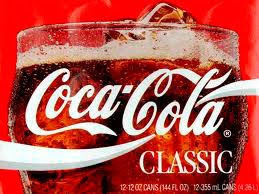 Ever since the creation of Coca-Cola in 1886, the precise recipe has been a closely guarded secret. The only official written copy is supposedly held in a U.S. bank vault and only two company employees at any one time are said to know the whole formula that gives the fizzy drink its distinctive flavour.
Ever since the creation of Coca-Cola in 1886, the precise recipe has been a closely guarded secret. The only official written copy is supposedly held in a U.S. bank vault and only two company employees at any one time are said to know the whole formula that gives the fizzy drink its distinctive flavour.But now, 125 years of near-total secrecy look to be over, as a website claims to have uncovered a list showing the ingredients and quantities used to make the drink.
The list, it claims, was actually published without fanfare in a 1979 local newspaper article in Coca-Cola’s U.S. home town of Atlanta, Georgia – but no one appeared to realise its significance.
The website, Thisamericanlife.org, said the 32-year-old article – buried on Page 28 of the Atlanta Journal-Constitution – shows a photograph of a recipe purported to be an exact replica of Coca-Cola creator John Pemberton’s.
The recipe had apparently been written by a friend of pharmacist Mr Pemberton’s then passed down through the generations. A can of Coca-Cola currently simply refers to its specialist ingredients as ‘Natural flavourings including caffeine’ alongside carbonated water, sugar, phosphoric acid and colour (Caramel E150d).
The closest the company itself has come to divulging its recipe was the admission that it originally included cocaine, although the narcotic was removed in the early 1900s.
 Tom Pickles and Sarah Harrington have never expected anything like what they had just experienced. Their afternoon's kayaking have turned out quite shocking after the sighting of a primeval sea monster. These kayakers have taken their watercraft out on the foggy waters of Lake Windermere, only to encounter what appeared to be "an enormous snake" swimming by.
Tom Pickles and Sarah Harrington have never expected anything like what they had just experienced. Their afternoon's kayaking have turned out quite shocking after the sighting of a primeval sea monster. These kayakers have taken their watercraft out on the foggy waters of Lake Windermere, only to encounter what appeared to be "an enormous snake" swimming by. Physicists have built the world's first device that can cancel out a laser beam - a so-called anti-laser. The device, created by a team from Yale University, is capable of absorbing an incoming laser beam entirely.
Physicists have built the world's first device that can cancel out a laser beam - a so-called anti-laser. The device, created by a team from Yale University, is capable of absorbing an incoming laser beam entirely. IBM has designed a supercomputer named as Watson to face two human contestants on the US quiz show Jeopardy. Watson will pit its wits against two of the game's most successful players.
IBM has designed a supercomputer named as Watson to face two human contestants on the US quiz show Jeopardy. Watson will pit its wits against two of the game's most successful players. Walking about 40 minutes a few times a week is enough to preserve memory and keep ageing brains on top form, research shows. Moderate exercise increased the size of the hippocampus, an area of the brain that makes memories, in 120 volunteers.
Walking about 40 minutes a few times a week is enough to preserve memory and keep ageing brains on top form, research shows. Moderate exercise increased the size of the hippocampus, an area of the brain that makes memories, in 120 volunteers. Most of us do it. We spend little amounts regularly on things like lunch, Starbucks lattes, manicures, golf maybe even for having a pizza delivered while we watch a weekly game on TV.
Most of us do it. We spend little amounts regularly on things like lunch, Starbucks lattes, manicures, golf maybe even for having a pizza delivered while we watch a weekly game on TV. NASA's planet-hunting telescope is finding whole new worlds of possibilities in the search for alien life. An early report from a cosmic census indicates that relatively small planets and stable multi-planet systems are far more plentiful than previous searches showed.
NASA's planet-hunting telescope is finding whole new worlds of possibilities in the search for alien life. An early report from a cosmic census indicates that relatively small planets and stable multi-planet systems are far more plentiful than previous searches showed.




